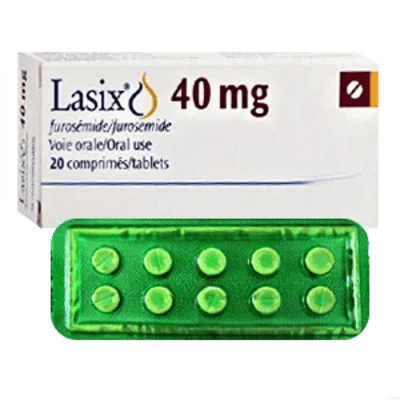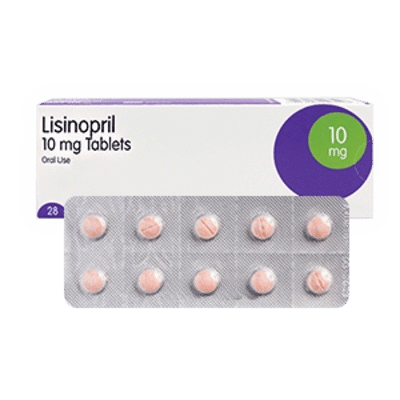The drug really helps to quickly relieve swelling, especially when it appears against the background of heart failure. A couple of hours after taking it, improvement is already noticeable, although you have to go to the toilet more often. The only thing that is alarming is the need to monitor the potassium level.

Lasix - Furosemide
Active ingredients: Furosemide- Quality products
- Support 24/7
- Fast delivery
What is it?
Lasix is a trade name for a drug whose active ingredient is furosemide. It is a powerful diuretic widely used in medicine for the rapid and effective removal of excess fluid from the body. The main mechanism of action of Lasix is to block the reabsorption of sodium and chlorine in the renal tubules, which leads to increased urine output.
Lasix is prescribed for conditions associated with fluid retention in the body, such as edema of various origins, including heart failure, liver and kidney disease. It is also used for arterial hypertension to reduce high blood pressure. The drug begins to act quickly enough, which makes it indispensable in situations requiring immediate elimination of edema.
The drug is available both in tablet form and as an injection solution, which allows it to be used in various clinical situations. However, it should be remembered that Lasix requires careful dosage and adherence to doctors recommendations, since its improper use can lead to significant electrolyte disturbances and other side effects.
Composition
The composition of Lasix includes several active and auxiliary components that ensure its effectiveness and stability. The main active substance is furosemide, which provides the diuretic effect of the drug. Additional ingredients included in the composition of Lasix tablets include substances that improve its absorption and stability.
- Furosemide is the main active ingredient responsible for removing excess fluid from the body.
- Lactose is used as a filler, helps form the tablet mass.
- Microcrystalline cellulose - helps create the desired texture of the tablet, improving its stability.
- Corn starch - is used to improve the structure and facilitate the disintegration of the tablet in the stomach.
- Magnesium stearate - provides lubricating properties, preventing the ingredients from sticking together during the production process.
- Colloidal silicon dioxide - is used as an anti-adhesive agent, preventing particle agglomeration.
Each of these components plays a role in creating a drug that is not only effective, but also easy to use, providing a quick and reliable effect on the body.
How to use?
Lasix is used in the dosage prescribed by the doctor, depending on the specific condition of the patient and the severity of the disease. Tablets are usually taken orally with a sufficient amount of water. Injectable forms of the drug are administered intravenously or intramuscularly, which provides a faster effect.
General recommendations for use include the following steps:
- Take a Lasix tablet in the morning to avoid frequent nighttime urges to urinate. If a second dose is needed, it is prescribed no later than midday.
- The exact dosage is selected by the doctor, usually starting with the minimum effective dose, which can be gradually increased depending on the bodys response.
- During treatment, it is recommended to monitor the level of electrolytes and fluid in the body, since furosemide can cause significant excretion of potassium and other important minerals.
If it is necessary to use an injectable form, the drug is administered under the strict supervision of medical personnel, especially if an urgent reduction in swelling or pressure is required. Always follow your doctors instructions to avoid side effects and ensure maximum effectiveness of treatment.
How does it work?
Lasix works thanks to its active ingredient furosemide, which belongs to the group of loop diuretics. Its main effect is directed at the kidneys, where it blocks the reabsorption of sodium and chlorine in the loop of Henle, a part of the renal tubule responsible for the reabsorption of these ions. As a result of this mechanism, the kidneys increase urine output, which helps reduce the volume of circulating blood and reduce swelling.
Furosemide begins to act quite quickly, usually within 30-60 minutes after taking the tablet. The maximum effect is achieved after 1-2 hours and lasts for several hours, depending on the dosage and individual characteristics of the body. With intravenous administration, the effect occurs even faster - after 5-15 minutes.
This mechanism of action makes Lasix an effective remedy for the emergency elimination of swelling of various origins, as well as for quickly lowering blood pressure in situations requiring immediate intervention.
Indications
Lasix is prescribed in cases where rapid and effective removal of excess fluid from the body is required. The main indications for the drug include:
- Edema caused by heart failure. Lasix helps reduce the load on the heart by removing excess fluid from the tissues.
- Acute and chronic kidney disease, accompanied by fluid retention and urinary dysfunction.
- Edema associated with liver diseases, such as cirrhosis, when fluid accumulates in the abdomen and other parts of the body.
- Arterial hypertension, especially in cases where a rapid reduction in blood pressure is necessary.
- Edema caused by other reasons, such as allergic reactions or severe lung disease.
Lasix can also be used in combination therapy to improve the patients condition in severe forms of edema caused by a combination of several factors. In each specific case, the need and dosage of the drug is determined by the doctor, based on the patients condition and clinical situation.
Contraindications
Lasix has a number of contraindications that need to be considered before starting treatment. It is not suitable for all patients and its use can be dangerous in certain situations. The main contraindications include:
- Acute renal failure with anuria (lack of urine), when the kidneys are unable to filter and remove fluid from the body.
- Severe electrolyte imbalances, such as hypokalemia (low potassium in the blood) and hyponatremia (low sodium), as Lasix may worsen these conditions.
- Allergic reactions to furosemide or other components of the drug, as well as to sulfonamide drugs.
- Conditions accompanied by severe dehydration or a marked drop in blood pressure (hypovolemia, hypotension).
- Hepatic coma, as the diuretic effect can worsen the patients neurological condition.
Lasix is also not recommended for use in pregnant women and nursing mothers without strict indications and careful medical supervision. Before starting treatment, be sure to consult your doctor to avoid possible risks and complications.
Side effects
Although Lasix is an effective treatment for edema and hypertension, its use may be accompanied by a number of side effects. They can range from mild to more serious, depending on the individual reaction of the body and the duration of taking the drug.
- Electrolyte imbalances. Frequent urination can lead to the loss of potassium, sodium, calcium and magnesium, which can cause muscle cramps, weakness and abnormal heart rhythms.
- Dehydration and decreased blood volume. This can manifest as dizziness, decreased blood pressure and even fainting, especially in the elderly.
- From the digestive system, nausea, vomiting, decreased appetite and diarrhea may occur.
- Allergic reactions. In rare cases, skin rashes, itching, redness, or even more serious reactions such as angioedema may occur.
- Hearing problems may occur, especially when using high doses of the drug or when it is administered intravenously quickly.
If you notice any of these side effects or other unusual reactions while taking Lasix, it is important to contact your doctor immediately. They will be able to adjust your dosage or prescribe additional treatment to relieve the negative symptoms.
Frequently asked questions
Lasix Reviews and Experiences
The drug is very effective, but you need to be careful with the dosage. I took it for swelling during pregnancy as prescribed by a doctor. The swelling really went away, but I felt very weak. The doctor explained that this was due to the leaching of electrolytes, so I was additionally prescribed potassium preparations.
Lasix was prescribed to me for a hypertensive crisis. The pressure dropped quite quickly, I felt relief 20 minutes after the injection. However, later there were unpleasant sensations in the muscles, as if something was missing. The doctor said that this could be due to the loss of electrolytes.









